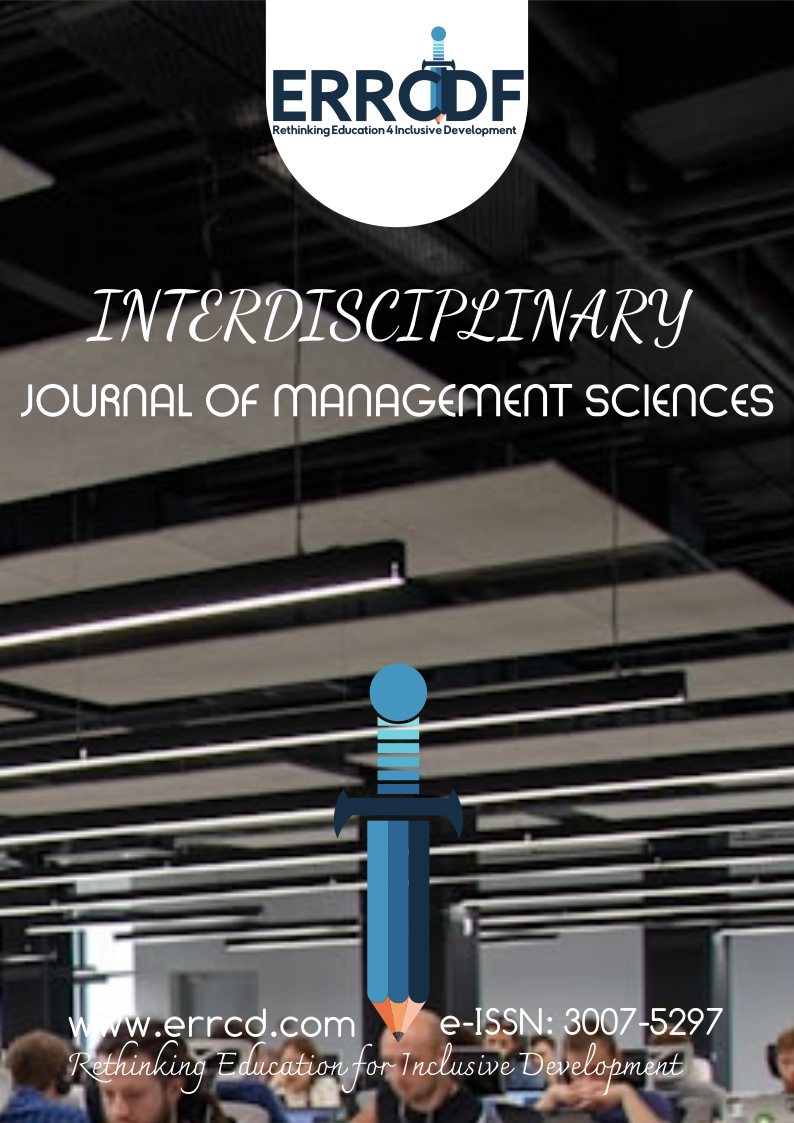Exploring neuromarketing strategies towards boosting consumer engagement with rural agricultural products: A systematic review
DOI:
https://doi.org/10.38140/ijms-2025.vol2.1.02Keywords:
Neuromarketing, consumer engagement, rural agricultural products, systematic reviewAbstract
Rural agricultural products play a crucial role in local economies and cultural heritage; however, they encounter significant market challenges, such as limited consumer trust, weak branding, and inadequate marketing resources. Neuromarketing, which involves the application of neuroscience tools such as eye-tracking, electroencephalogram (EEG), functional magnetic resonance imaging (fMRI), and functional near-infrared spectroscopy (fNIRS), provides a novel approach to understanding consumers' unconscious responses to marketing stimuli. This systematic review synthesises the literature on neuromarketing strategies designed to enhance consumer engagement with rural agricultural products. Multiple searches were conducted across various academic databases (e.g., Google Scholar, ScienceDirect, PubMed, PsycINFO, JSTOR, AGRIS) using targeted keywords (e.g., "consumer neuroscience," "rural agricultural products," "sensory marketing"), focusing on peer-reviewed English studies published from 2018 onwards. From an initial pool of 236 articles, screening and eligibility checks yielded 14 highly relevant studies. Key themes that emerged include the influence of emotional and cognitive stimuli, packaging design, narrative storytelling, labelling, pricing, and ethical cues on consumer behaviour. For instance, appealing emotional narratives and authentic cultural storytelling consistently enhance recall and brand loyalty. Clear, trust-building labels (e.g., "organic," "antibiotic-free") engage decision-making regions of the brain, serving as cognitive shortcuts that strengthen perceived value. Additionally, visual design elements such as prominent eco-labels and origin indicators capture attention and convey quality. Despite their value, existing studies face key limitations such as small, non-representative samples and artificial settings. However, applying neuroscience insights can help rural producers enhance packaging, branding, and storytelling to build consumer trust and promote sustainable economic growth.
References
Agrawal, M., & Chaurasia, A. (2024). Sustaining growth: Mapping the rural market ecosystem with innovative marketing. Shanlax International Journal of Arts, Science and Humanities, 11(S3), 180–191. https://doi.org/10.34293/sijash.v11iS3-Feb.7259
Alsharif, A. H., Salleh, N., & Baharun, R. (2021). Bibliometric analysis. Journal of Theoretical and Applied Information Technology, 98, 2948–2962. http://dx.doi.org/10.6007/IJARAFMS/v11-i3/11673
Apriliantry, F., Purwanegara, M. S., & Ismail, W. K. W. (2018). Detecting buyers' role effects to achieve collaborative business relationships in the agriculture business using electroencephalogram (EEG). International Journal of Agricultural Resources, Governance and Ecology, 14, 45–61. http://dx.doi.org/10.1504/IJARGE.2018.10011892
Barbierato, E. (2024). NEUROWINE: How extrinsic cues influence wine quality perception. https://tesidottorato.depositolegale.it/bitstream/20.500.14242/187652/1/PhD_FullText_Barbierato.pdf
Georgakarakou, C., Riskos, K., Tsourvakas, G., & Yfantidou, I. (2020). What features of green products packaging are more eye-catching? An eye-tracking exploratory study about organic agricultural products. International Journal of Technology Marketing, 14, 93–124. https://doi.org/10.1504/IJTMKT.2020.110124
Gunasekaran, V., & Murugan, S. (2020). Challenges and opportunities of organic products market. Studies in Indian Place Names, 40, 2626–2640.
Hong, J., Yang, J., Wooldridge, B. R., & Bhappu, A. D. (2022). Sharing consumers’ brand storytelling: Influence of consumers’ storytelling on brand attitude via emotions and cognitions. Journal of Product & Brand Management, 31(2), 265–278. https://doi.org/10.1108/JPBM-07-2019-2485
Kumar, P., Abubakar, A. A., Ahmed, M. A., Hayat, M. N., Ajat, M., Kaka, U., Goh, Y. M., & Sazili, A. Q. (2023). Electroencephalogram and physiological responses as affected by slaughter empathy in goats. Animals, 13, 1100. https://doi.org/10.3390/ani13061100
Kumar, P., Abubakar, A. A., Sazili, A. Q., Kaka, U., & Goh, Y.-M. (2022). Application of electroencephalography in preslaughter management: A review. Animals, 12, 2857. https://doi.org/10.3390/ani12202857
Lalani, B., Gray, S., & Mitra-Ganguli, T. (2023). Systems thinking in an era of climate change: Does cognitive neuroscience hold the key to improving environmental decision-making? A perspective on climate-smart agriculture. Frontiers in Integrative Neuroscience, 17, 1145744. https://doi.org/10.3389/fnint.2023.1145744
Mandung, F. (2025). The influence of storytelling techniques in digital marketing on brand loyalty: A consumer psychology perspective. Golden Ratio of Marketing and Applied Psychology of Business, 5(1), 66–78. https://doi.org/10.52970/grmapb.v5i1.782
Mehlhose, C., & Risius, A. (2021). Assessing label frames and emotional primes in the context of animal rearing—Response of an explorative fNIRS study. Sustainability, 13(10), 5275. https://doi.org/10.3390/su13095275
Meyerding, S. G., & Mehlhose, C. M. (2020). Can neuromarketing add value to the traditional marketing research? An exemplary experiment with functional near-infrared spectroscopy (fNIRS). Journal of Business Research, 107, 172–185. https://doi.org/10.1016/j.jbusres.2018.10.052
Meyerding, S. G., & Merz, N. (2018). Consumer preferences for organic labels in Germany using the example of apples—Combining choice-based conjoint analysis and eye-tracking measurements. Journal of Cleaner Production, 181, 772–783. https://doi.org/10.1016/j.jclepro.2018.01.235
Mulibana, L., & Tshikovhi, N. (2024). Rural entrepreneurship and innovation in BRICS economies: Secondary evidence from rural areas in South Africa. Sustainability, 16(5), 2408. https://doi.org/10.3390/su16062408
Ndlovu, C., & Masuku, M. (2021). Small-scale farming and access to market: Challenges and opportunities in South Africa. Journal La Sociale, 2(2), 50–63. https://doi.org/10.37899/journal-la-sociale.v2i5.491
Phiri, S. (2024). Zambian consumers and the country-of-origin effect. International Journal of Innovative Science and Research Technology, 9(2). https://doi.org/10.38124/ijisrt/IJISRT24APR885
Pluta-Olearnik, M., & Szulga, P. (2022). The importance of emotions in consumer purchase decisions: A neuromarketing approach. Marketing Instytucji Naukowych i Badawczych, 44(4), 87–104. https://doi.org/10.2478/minib-2022-0010
Proi, M., Dudinskaya, E. C., Naspetti, S., Ozturk, E., & Zanoli, R. (2023). The role of eco-labels in making environmentally friendly choices: An eye-tracking study on aquaculture products with Italian consumers. Sustainability, 15(6), 4659. https://doi.org/10.3390/su15054659
Robu, M., Jit?reanu, A.-F., & Mih?il? Borza, M. (2022). Neuromarketing in the agri-food sector. Scientific Papers: Management, Economic Engineering in Agriculture and Rural Development, 22(1), 501–507. https://repository.iuls.ro/xmlui/handle/20.500.12811/3469
Rödiger, M., & Hamm, U. (2020). Do consumers care about organic and conventional food prices? An eye tracking study. Organic Agriculture, 10(1), 75–87. https://doi.org/10.1007/s13165-019-00252-8
Russo, V., Bilucaglia, M., Circi, R., Bellati, M., Valesi, R., Laureanti, R., Licitra, G., & Zito, M. (2022). The role of the emotional sequence in the communication of the territorial cheeses: A neuromarketing approach. Foods, 11(16), 2349. https://doi.org/10.3390/foods11152349
Russo, V., Milani Marin, L. E., Fici, A., Bilucaglia, M., Circi, R., Rivetti, F., Bellati, M., & Zito, M. (2021). Strategic communication and neuromarketing in the fisheries sector: Generating ideas from the territory. Frontiers in Communication, 6, 659484. https://doi.org/10.3389/fcomm.2021.659484
Downloads
Published
How to Cite
Issue
Section
License
Copyright (c) 2025 Olaitan Ayotunde Shemfe, Ifeanyi Mbukanma

This work is licensed under a Creative Commons Attribution 4.0 International License.







